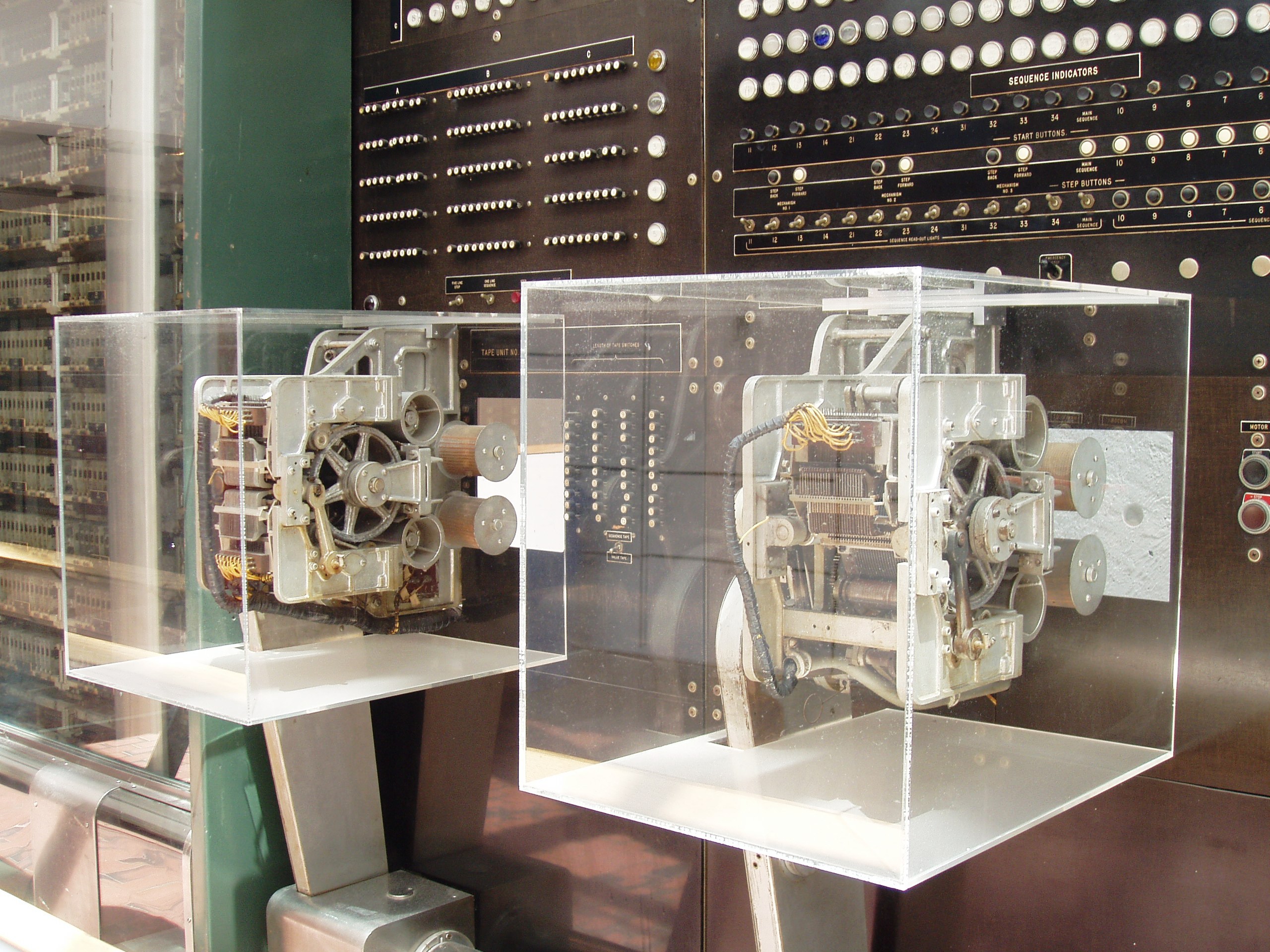Richard Milton Bloch on:
[Wikipedia]
[Google]
[Amazon]
Richard Milton Bloch (1921 – 2000) was a pioneering American computer programmer. Bloch, Grace Hopper, and Robert Campbell were the first programmers of the
 The Harvard Mark I became operational in 1944, and was used for war work, including computation of
The Harvard Mark I became operational in 1944, and was used for war work, including computation of
Harvard Mark I
The Harvard Mark I, or IBM Automatic Sequence Controlled Calculator (ASCC), was a general-purpose electromechanical computer used in the war effort during the last part of World War II.
One of the first programs to run on the Mark I was initi ...
, an electromechanical computer which, when it began operation in 1944, was the first American programmable computer.
Early life
Bloch was born inRochester, New York
Rochester () is a City (New York), city in the U.S. state of New York (state), New York, the county seat, seat of Monroe County, New York, Monroe County, and the fourth-most populous in the state after New York City, Buffalo, New York, Buffalo, ...
, on June 18, 1921, and grew up there, being graduated from Benjamin Franklin High School. He then attended Harvard University on a scholarship, majoring in mathematics, being graduated in 1943. He then immediately joined the Navy, as World War II was in progress, and was assigned to the Naval Research Institute. There, he was recruited by Howard Aiken to work on the Mark I project, moving to Harvard in March 1944.
Mark I work
 The Harvard Mark I became operational in 1944, and was used for war work, including computation of
The Harvard Mark I became operational in 1944, and was used for war work, including computation of ballistic table
A ballistic table or ballistic chart is a tool which predicts the trajectory of a projectile, and is used to compensate for physical effects in order to increase the probability of the projectile reaching the intended target. Ballistic tables are ...
s, Bessel tables for electronics and other applications, and calculations used by the Manhattan Project
The Manhattan Project was a research and development undertaking during World War II that produced the first nuclear weapons. It was led by the United States with the support of the United Kingdom and Canada. From 1942 to 1946, the project w ...
for development of the atomic bomb.
Compiler
In computing, a compiler is a computer program that translates computer code written in one programming language (the ''source'' language) into another language (the ''target'' language). The name "compiler" is primarily used for programs that ...
s and even assemblers had not yet been invented, so all programming was done in machine code punched into paper tape
Five- and eight-hole punched paper tape
Paper tape reader on the Harwell computer with a small piece of five-hole tape connected in a circle – creating a physical program loop
Punched tape or perforated paper tape is a form of data storage ...
. Grace Hopper called Bloch the Mozart of the computer due to his ability to write a program in ink and have it run the first time. Robert Campbell called Bloch the primary force in getting the Mark I into productive operation.
Bloch and Campbell kept notebooks in which they wrote out pieces of code that had been checked out and were known to be correct. For instance, one of Bloch's routines computed sine
In mathematics, sine and cosine are trigonometric functions of an angle. The sine and cosine of an acute angle are defined in the context of a right triangle: for the specified angle, its sine is the ratio of the length of the side that is oppo ...
s for positive angles less than π/4 to 10 digits. Grace Hopper just copied Bloch's routine into her own program when needed, rather than using the (slow) sine unit built into the machine. This was an early step toward the creation of subroutine
In computer programming, a function or subroutine is a sequence of program instructions that performs a specific task, packaged as a unit. This unit can then be used in programs wherever that particular task should be performed.
Functions may ...
s. Later, these subroutines were stored on separate paper tape rolls, although branching to one of these separate paper tapes and returning to the main program was done manually by human operators.
Later career
Bloch left Harvard in 1947. He then worked for Raytheon on development of theRAYDAC
The RAYDAC (for Raytheon Digital Automatic Computer) was a one-of-a-kind computer built by Raytheon. It was started in 1949 and finished in 1953. It was installed at the Naval Air Missile Test Center at Point Mugu, California.
The RAYDAC used 5,2 ...
, then became general manager of Raytheon's computer division, and later vice president for technical operations at Honeywell
Honeywell International Inc. is an American publicly traded, multinational conglomerate corporation headquartered in Charlotte, North Carolina. It primarily operates in four areas of business: aerospace, building technologies, performance ma ...
, vice president for corporate development at the Auerbach Corporation, vice president of the advanced systems division of General Electric
General Electric Company (GE) is an American multinational conglomerate founded in 1892, and incorporated in New York state and headquartered in Boston. The company operated in sectors including healthcare, aviation, power, renewable energ ...
, and chairman and chief executive of the Artificial Intelligence Corporation and the Meiko Scientific Corporation.
Bloch died of cancer on May 22, 2000.
References
{{DEFAULTSORT:Bloch, Richard Milton American computer programmers American technology chief executives United States Navy personnel of World War II Harvard College alumni Eastman School of Music alumni 1921 births 2000 deaths People from Rochester, New York